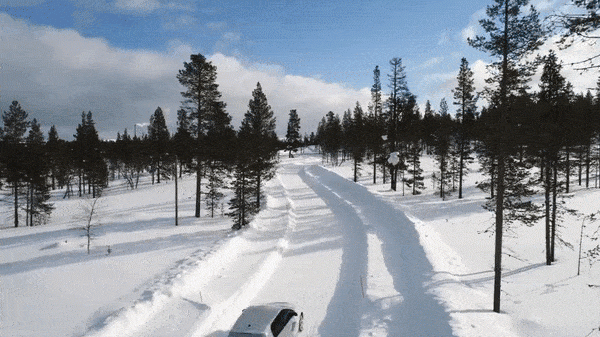Here is how wheels of different diameters affect performance winter tyre: Test
What winter tires are better: 16, 17 or 18 inch? The answer is not obvious

Now it will be about that time of year when most people start thinking about buying winter tyres in preparation for the cold and snowy months. We already wrote about the importance of winter tyres before:
What are winter tyres better Narrow or wide?
The classic test shows how winter tires behave better on the ice
Comparison of brake properties of winter and summer tires in the winter were not in favor of the first
Here, different size wheels can affect the performance of the car
Test of winter tyres 2017 for crossovers: 225/55 R17
Does the wide rubber extra grip
But what you might want to choose the dimension of winter wheels, we have never talked. But nevertheless, it is an important factor.
In the difficult task of choice we are fully committed professionals with a YouTube channel know about the tyres all the guys with the “TyreReviews”. They have already made a number of useful and interesting reviews, and is now ready to offer a new video with a detailed analysis of how different size tires can affect the performance and sense of drivability. For testing, leading Jonathan Benson received three sets of winter tires: 16-inch wide by 205, 17-inch with 225 width and 18-inch tires to 225 mm.
Here’s what he found:
Testing three tires in the snow

When buying winter tyres, the accepted rule is that the narrower tires you purchase – the better. The logic is that a thinner tire is better for pushing snow, snow “porridge” and other encrusted winter substance. The better the wheel is immersed in snow, the greater the pressure on the road surface, thus better handling. Many people think so.
It is noteworthy that testing during the races in the snow this rule is confirmed only partly. Yes, a narrower 16-inch tire, we will remind, width 205 mm, turned out to be better in acceleration and lap time. However, the braking is better behaved is the biggest 18” tire, driving on a 37 cm distance less than the narrow tire, but subjectively, the most stable and comfortable when riding in the snow was average, the 17-inch tire. Strangely, she is a clear outsider test, but the pilot liked the most.
So, oddly enough, the difference in performance between a narrow tire with a small diameter and a wider wheel was not as big as commonly believed.
It was found that despite a small shortage of quality indicators and 17-inch tires, they are, in fact, proved to be a more balanced and favourable in operation. Also, it should be noted that not all are engaged in high-speed driving in extreme snow conditions. Thus the master was able to conclude that all tested winter tyres in General proved to be excellent, but if you want to understeer less impact on handling, take the wheels of a wider diameter.
Acceleration was measured from 5 to 30 km/h Braking from 50 to 5 km/h. All testing in the snow took place in the center of the “Goodyear Arctic Centre, Ivalo”
Testing the water

In winter the road may not be snow and water. The behavior of tires in wet conditions?
For “wet testing” a narrower 16-inch tires it is best to cope with aquaplaning. Although 18-inch tires were the worst at braking on a wet surface from a whole winter of three, they felt better in handling on wet pavement.
However, you can also see that the results of the tests on all three tires were pretty close to each other. Subjectively, however, Benson said that he personally would like to put 18 wheels on a sports car because they give more feedback.
Labels in the table from top to bottom: aquaplaning, braking on wet pavement, handling, subjective opinion.
Testing on a dry surface

Without a doubt, 17-and 18-inch tires exceeded the 16-inch tires in terms of braking, handling, and subjective feelings when we are talking about dry pavement. This is because the more rubber touching the road (larger contact patch), the better you will control the car. To summarize the test on dry asphalt pavement in the following way: if you have to perform an emergency maneuver, when the area is dry, would be better if you have the car standing wide tires of larger diameter. They will be much better narrow 16” tires.
But if you are a fan of comfort and do not carry noise, small tires proved to be definitely better.
A video test can be viewed here (as always, the translated subtitles will help you to understand what was going on in the video):
